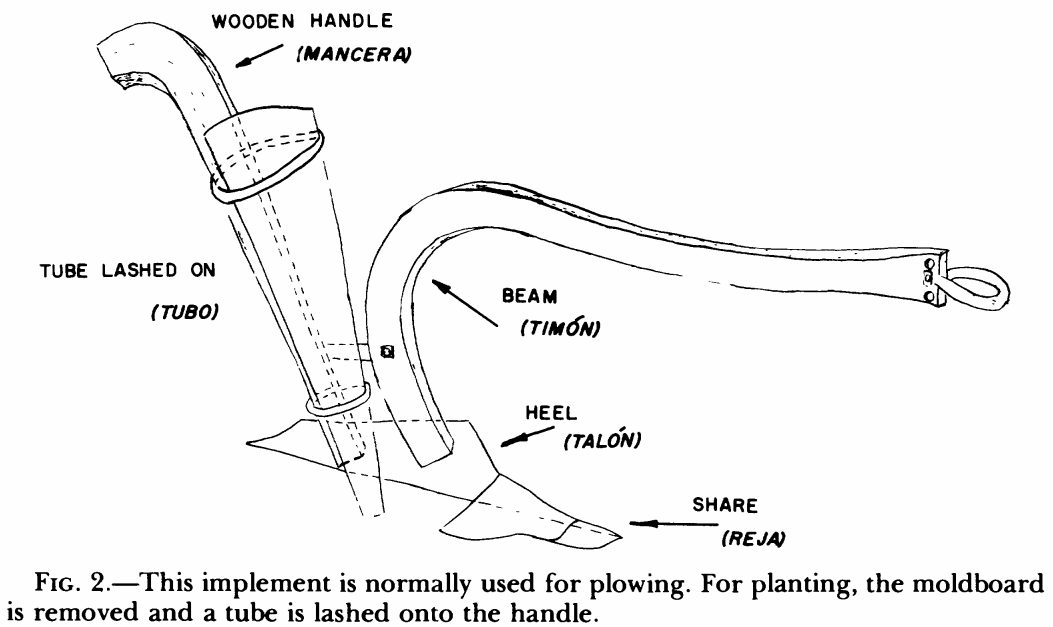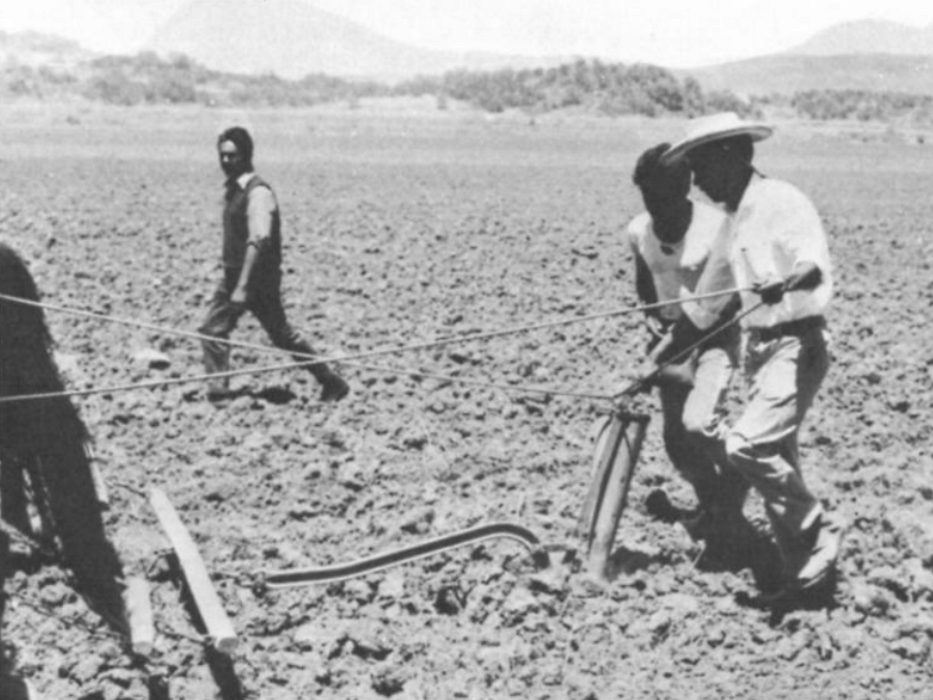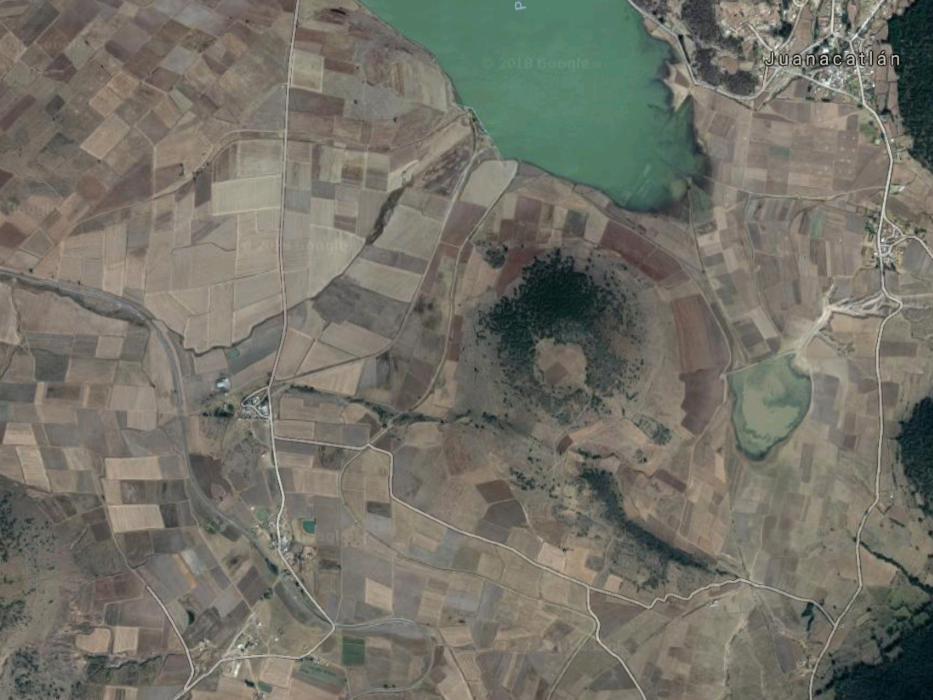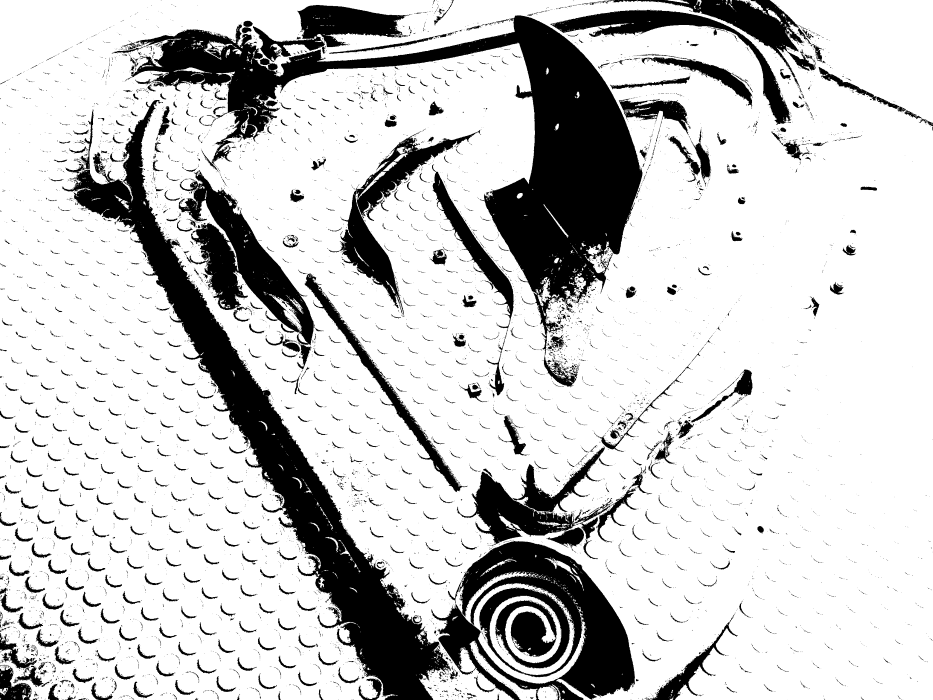
the Temascalcingan Sembradora:
an anti-colonial technology
Indigenous to Temascalcingo, Mexico the sembradora was adapted from the plow. The moldboard was removed, so soil was no longer overturned into furrows. This retained soil moisture and decreased the likelihood of desertification. A tube formed from the maguey leaf (Agave americana) allowed the farmer to deposit seeds at desired intervals, determined by microclimatic conditions and the farmer's knowledge of their land. An adjustable plowshare allowed the farmer to plant seeds at variable depths contingent upon recent rainfall, groundwater levels, and microvariations in soil properties within the plot.

The sembradora was developed as a reaction against the mechanized farming equipment pushed by Rockefeller Foundation development agents during the Green Revolution in Mexico. Farmers in the Temascalcingan region experimented with tractors for planting, but found them clumsy and costly. Agricultural land in much of Mexico is composed of small discontinuous non-rectilinear plots. A family may be responsible for several rhomboid or curvilinear plots unconnected to one another.
The sembradora was developed as a reaction against the mechanized farming equipment pushed by Rockefeller Foundation development agents during the Green Revolution in Mexico. Farmers in the Temascalcingan region experimented with tractors for planting, but found them clumsy and costly. Agricultural land in much of Mexico is composed of small discontinuous non-rectilinear plots. A family may be responsible for several rhomboid or curvilinear plots unconnected to one another.

The tractor is optimized for rectilinear large-holdings. The economy-of-scale advantage it provides incentivizes the accumulation of land and capital, accentuating socio-economic inequalities. It doesn't simply sculpt the farmer's holdings, it sculpts the landscape itself. It reconfigures topography to privilege the mechanization of agriculture and the standardization of landscape. It is both the product and a producer of (agri)cultural homogeneity.
The sembradora itself has been appropriated into an industrial-agriculture implement

this deconstructed sembradora transgresses the rigid linearity and homogeneity of industrial agricultural landscapes and capitalistic technoscientific patterns of thought, just as the Temascalcingan farmers replaced industrial agricultural machinery produced by American agribusinesses and powered by petroleum byproducts with the sembradora, made from local materials using local knowledge and powered by renewable animal energy
this deconstructed sembradora transgresses the rigid linearity and homogeneity of industrial agricultural landscapes and capitalistic technoscientific patterns of thought, just as the Temascalcingan farmers replaced industrial agricultural machinery produced by American agribusinesses and powered by petroleum byproducts with the sembradora, made from local materials using local knowledge and powered by renewable animal energy
Sembradora Geo-Humanities Presentation
By Paul Kelley Vieth
Sembradora Geo-Humanities Presentation
- 631



